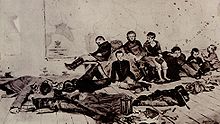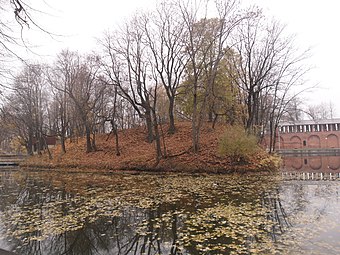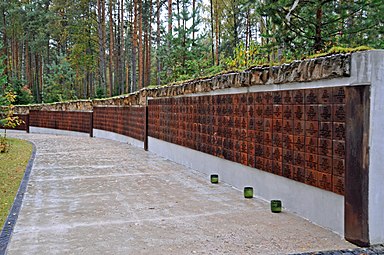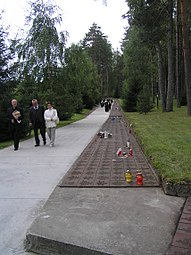
The Russian Civil War was a multi-party civil war in the former Russian Empire sparked by the overthrowing of the social-democratic Russian Provisional Government in the October Revolution, as many factions vied to determine Russia's political future. It resulted in the formation of the Russian Socialist Federative Soviet Republic and later the Union of Soviet Socialist Republics in most of its territory. Its finale marked the end of the Russian Revolution, which was one of the key events of the 20th century.

Felix Edmundovich Dzerzhinsky, nicknamed "Iron Felix", was a Bolshevik revolutionary and politician. From 1917 until his death in 1926, he led the first two Soviet secret police organizations, the Cheka and the OGPU, establishing state security organs for the post-revolutionary Soviet regime. He was one of the architects of the Red Terror and de-Cossackization.

The Byelorussian Soviet Socialist Republic, also known as Byelorussia, Soviet Belarus, or simply Belarus, was a republic of the Soviet Union (USSR). It existed between 1920 and 1991 as one of fifteen constituent republics of the USSR, with its own legislation from 1990 to 1991. The republic was ruled by the Communist Party of Byelorussia and was also referred to as Soviet Byelorussia or Soviet Belarus by a number of historians. Other names for Byelorussia included White Russia or White Russian Soviet Socialist Republic and Belorussian Soviet Socialist Republic.
The Polish minority in the Soviet Union are Polish diaspora who used to reside near or within the borders of the Soviet Union before its dissolution. Some of them continued to live in the post-Soviet states, most notably in Lithuania, Belarus, and Ukraine, the areas historically associated with the Polish–Lithuanian Commonwealth, as well as in Kazakhstan and Azerbaijan among others.

Katorga was a system of penal labor in the Russian Empire and the Soviet Union.

Józef Unszlicht or Iosif Stanislavovich Unshlikht was a Polish and Russian revolutionary activist, a Soviet government official and one of the founders of the Cheka.
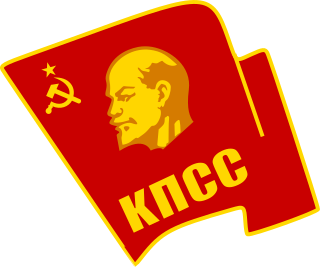
The Communist Party of Estonia was a regional branch of the Soviet communist party which in 1920–1940 operated illegally in Estonia and, after the 1940 occupation and annexation of the country by the Soviet Union, was formally re-merged into the USSR's All-Union Communist Party (bolsheviks) and operated as part of the CPSU until 1990.

A sybirak is a person resettled to Siberia. Like its Russian counterpart sibiryák the word can refer to any dweller of Siberia, but it more specifically refers to Poles imprisoned or exiled to Siberia or even to those sent to the Russian Arctic or to Kazakhstan in the 1940s.
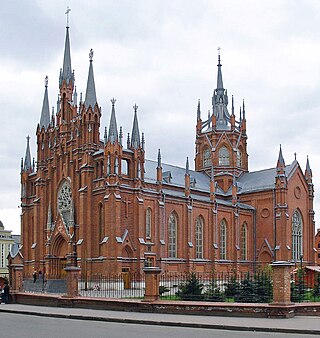
Belarusians are a major ethnic group in Russia. At the census of 2010, 521,443 Russian citizens indicated Belarusian ancestry. Major Belarusian groups live in the regions of Moscow, St. Petersburg, Kaliningrad, Karelia and Siberia. Most Belarusians in Russia are migrants from modern Belarus or their descendants, while a minor part of Belarusians in Russia are indigenous.
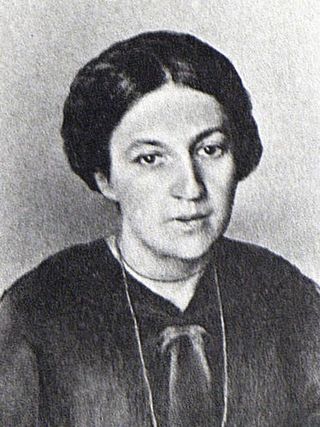
Varvara Nikolaevna Yakovleva was a prominent Bolshevik party member and Soviet government official who later supported Leon Trotsky's attempt to democratize the party. She was sentenced to 20 years in prison in 1938 for membership in a "diversionary terrorist organization." She was later shot in the Oryol Central Prison.

Stanisław Feliks Bobiński was a Soviet communist politician, journalist and military commander of Polish origin.

The Polish population transfers in 1944–1946 from the eastern half of prewar Poland, were the forced migrations of Poles toward the end and in the aftermath of World War II. These were the result of a Soviet Union policy that had been ratified by the main Allies of World War II. Similarly, the Soviet Union had enforced policies between 1939 and 1941 which targeted and expelled ethnic Poles residing in the Soviet zone of occupation following the Nazi-Soviet invasion of Poland. The second wave of expulsions resulted from the retaking of Poland from the Wehrmacht by the Red Army. The USSR took over territory for its western republics.

The flight and forced displacement of Poles from all territories east of the Second Polish Republic (Kresy) pertains to the dramatic decrease of Polish presence on the territory of the post-war Soviet Union in the first half of the 20th century. The greatest migrations took place in waves between the Bolshevik Revolution of 1917 and in the aftermath of World War II in Europe.

Alexei Ivanovich Rykov was a Russian Bolshevik revolutionary and a Soviet politician and statesman, most prominent as premier of Russia and the Soviet Union from 1924 to 1929 and 1924 to 1930 respectively. He was one of the accused in Joseph Stalin's show trials during the Great Purge.
Vasiliy Kuzmich Averin was a Russian Bolshevik revolutionary, a leading member of the Cheka and a member of the Soviet government in Ukraine.
The Russification of Poland was an intense process, especially under Partitioned Poland, when the Russian state aimed to denationalise Poles via incremental enforcement of language, culture, the arts, the Orthodox religion and Russian practices. The most forceful Russification was enforced onto children, due to their poor knowledge of Polish culture and language.
The Central Bureau Communists of Poland was a group of Polish Communists in the Soviet Union during World War II, hand-picked by the Russian Secretariat of the Central Committee (BKK) with the aim of assisting in the takeover of power in Poland. It was a secret structure initially, active between January and August 1944, and closely affiliated with the Soviet Central Committee of the Communist Party.

Alexander Georgiyevich Beloborodov was a Russian Bolshevik revolutionary, Soviet politician, party figure and statesman best known for his role as one of the chief regicides of Nicholas II and his family.

An index of articles related to the Russian Revolution and the Russian Civil War period (1905–1922). It covers articles on topics, events, and persons related to the revolutionary era, from the 1905 Russian Revolution until the end of the Russian Civil War. The See also section includes other lists related to Revolutionary Russia and the Soviet Union, including an index of articles about the Soviet Union (1922–1991) which is the next article in this series, and Bibliography of the Russian Revolution and Civil War.
Vasiliy Nikolayevich Mantsev was a Russian revolutionary and high-ranking official of the Cheka.

